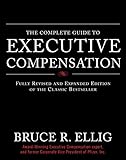How to Pay Employees: The Internal Pay Structure and Pay Ranges

My Experience
In getting my Master’s Degree of Business Administration I was required to create a complete Pay Structure or Payroll system. It was a very tedious task that took a lot of effort to ace. I learned of the challenges Human Resource Departments face when they have to implement a new Pay Structure system. I had to do a job and pay analysis for each position I created in my fake factory. I can see how this is an area that anyone could use more information about because of the amount of research required.
A company should have a system in place that highlights how much to pay employees. However, there is a delicate line between paying enough money to attract and retain the best employees without endangering the company’s budget. Therefore, research is a key part of developing a solid pay structure.
This article will cover internal job and pay structures, internal and external job factors, internal pay systems, compensable factors, performance-based raises, incentive pay options, pay for new employees, researching pay, and a thorough example of all pay levels.
The Internal Job and Pay Structure

A Practical Guide to Compensation Analysis

Job Structure
Determining how much to pay employees is often more of an art than a science. Rather than paying a new employee based on his or her credentials, it’s often better for companies to plan what they will pay based on the specific position. This requires companies to create a job structure for each position, which consists of the relative pay for different positions in a company.

Pay Structure
Pay structure is based on:
- Minimum wage
- Overtime pay
- The field's current salary
- Seniority of employees
- Policies of raises
- The geographic location
- Staff's background, skills, and talents
Paying Employees – Hourly vs. Salary

Balancing Internal and External Job Factors
The pay structure should reflect what the company knows about its market forces, as well as how each position contributes to helping it achieve its goals. Pay levels should also be set at the point that employees view them as fair and motivating.
Pay, Wage & Hour, and Benefits: Managing Employees
Different Types of Internal Pay Systems


Key Jobs
To create a job structure more practically, companies can define key jobs. Key jobs are well-known amongst companies. Therefore both the company and the employees have a good idea of what a particular key job should pay.

Pay Grades
To create a pay grade a company examines a set of jobs having similar worth, often grouping them together to establish rates of pay. One drawback of grouping jobs together is that they may not take into consideration market levels or the current needs of the company’s internal structure.

Pay Ranges
To gain more flexibility, many companies balance conflicting external factors with performance reviews to determine pay ranges. This gives companies the opportunity to give promotions within the company. Job specific pay ranges typically do not vary from company to company, making research easier. Some of the factors that determine pay ranges are listed below.
Factors that Determine Pay Ranges
The type and cost of a particular business
|
The profitability and success of the company
|
The geographic location of the company
|
The degree to which the job affects the company’s success
|
The state’s wage laws
|
An employee’s skills, experience, and seniority
|
Solving the Compensation Puzzle: Putting Together a Complete Pay and Performance System

Pay People Right! Breakthrough Reward Strategies to Create Great Companies

The Best Practices for Designing Salary Structures
- The Best Practices for Designing Salary Structures
This article helps companies develop and implement salary structures to provide a framework for administering their employee compensation programs. It discusses the balance between the pay levels of employee internally versus externally.

Pay Differentials
Some companies have found pay differentials useful. However, they are expensive sometimes and difficult to apply when transferring companies from one location to another. Pay differentials reflects differences in working conditions and labor markets.

Skill-Based Pay
Often in many specialty fields, it is very hard to find specific skill sets. Skill-based pay is typically higher than usual, because it is harder to find. Gaining a position in a specialty field benefits employees, because it empowers them and enriches jobs, adding to the company’s knowledge base. This gives the company more innovation to makes decisions and increases the flexibility of options.

Advantages of Skill-Based Pay
Skill-based pay encourages learning, adaptability, open-mindedness, and encompasses them with a broader understanding of the company’s strategic mission. This adaptability gives employees a broader view, increasing their knowledge of the company, making them more proactive. Research should be conducted in order to assess the value of specific skill sets.

Disadvantages of Skill-Based Pay
It often satisfies employees who have the necessary skills and does not encourage them to develop new skills to improve their performance. Another disadvantage is that they are difficult to obtain market data on, making it hard to analyze salaries for these positions. One challenge when designing jobs is to ensure that the work design and pay structure of each position support one another.

The Drawbacks of Setting Standard Pay
Seeing the pay for jobs or groups of jobs denies the Human Resource Department the flexibility it may need for a particular position. This also limits promotions, because it requires companies to create specific job descriptions and determine the relevant salaries associated with these new job titles.

The Advantages of Setting Standard Pay
Supervisors can combine more responsibilities in a single position with the de-layering of the structure of jobs. This gives the company more flexibility in making delegations, and it allows them to award pay increases without making the Human Resource department create new job positions. This is known as broad banding, which allows the company the opportunity to reward employees in ways that do not reflect their promotional raises.

Compensable Factors
Compensable factors are factors that the company values and chooses to pay extra for. These factors could be better working conditions and more favorable responsibilities. Optional benefits can be alternatives to pay and offer more flexibility for the company.
Compensable Factors
Are compensable factors important to you?

Employee Benefits
Benefits help retain and motivate employees. They serve to attract qualified employees. Some employers assemble creative benefit packages that include “perks” that other companies do not offer.
Companies should aim to create a favorable package that helps them achieve their objectives by attracting the best employees. They should ensure that their employees are aware of what benefits are available to them.
Typical Benefit Options Offered

• Paid Leave
|
• Group Insurance
|
• Retirement Plans
|
• Family Benefits
|
Employee Benefits
Which of these options is most enticing to you?
Typical Optional Benefits

Typical Optional Benefits
• Floating Holidays
|
• Personal Days Off
|
• Flexible Spending Accounts
|
• An Employee Wellness Program
|
• A Pension Plan
|
• A 401K Plan
|
• Profit-Sharing
|
• Stock Ownership Plans
|
• Child Care
|
• Tuition Reimbursement Programs
|
Creative Optional Benefits

Creative Optional Benefits
• Fresh Baked Cookies
|
• Allowing Jeans on Fridays
|
• Gift Exchanges on Holidays
|
• Chili Cook-Outs
|
• Free Online Courses
|
• Holiday Parties
|
• Flexible Hours
|
• Family Fun Events
|
Employee Benefits
- A Company's Benefit System: How Rewards Affect Employee Behavior
Benefits are clearly important to employees. They are considered a crucial organizational reward. To bring about desirable behavior in employees, organizations must implement reward systems.

Performance-Based Raises
While many employees are attracted to the perks of the job, most still expect pay increases as the primary source of an incentive to help the company achieve its goals. Raises may be given more often to those who strive to grow their responsibilities, take their knowledge and skills to a higher level for the success of the company, work hard consistently, and are willing to exceed expectations and grow independently.
A company must ensure it is making a wise investment in giving an employee a raise. Analyzing the proper raise is often based on the employee’s performance evaluation. A company should be well informed as to how much an employee is worth and how much it wants to keep the employee.
Pay for Results! A Practical Guide to Effective Employee Compensation

Raises
Does your company offer raises?

Incentive Pay Options
- Piecework Rates
- Individual Bonuses
- Sales Commissions
- Gain-Sharing
- Team Awards
- Profit Sharing
- Stock Ownership
Incentive Pay
Are you being paid using incentive pay?
The Sales Compensation Handbook


Pay for New Employees
Companies should aim to pay just enough of a salary to attract the best applicants, but not so much that it is unreasonable for the company’s bottom line. Since it costs the company to invest in training, companies should ensure they choose winners. There is always some risk involved in hiring a new employee.
There must be room for raises in the pay rate off. One way to get the salary ball rolling is to examine the candidate’s salary history before throwing out a number. Examine the candidate’s qualifications and skills to see where they fall in the given pay range established.
Once the amount has been decided upon, it should be put in an offer letter. Quality of life perks can go a long ways in attracting potential stars and enriching compensation offers. Some employees with solid families may appreciate more time over more money.

Researching Pay
To determine the best relative pay, analyzing the job market for comparison is a good place to start. Compare the core functions of the position, the size of the company, the job skills and experience required for the job title, along with the geographic location of the competitors in order to see what they are paying.
Market Data

- Salary.com
This site has a large amount of information on salaries for either an employee or a business. It has job or employee salary reports you can create, view, and/or manage. These Job Valuation Reports are detailed compensation reports for a specific job. - Craigslist
This site allows you to choose a specific location by country, state, and city. Craigslist provides users with a large variety of topics. Under the topic, "Jobs," you can specify a position and see the rate of pay the competition is offering. - Career Builder
CareerBuilder has a salary calculator under the "Advice and Resources" section. All you have to do is enter the job title and location, and Career Builder will provide you with the average salary for that position in that location. - Monster
Along with the career resources, this site provides information about salaries and benefits. Monster supplies readers with career snapshots, career, mapping, and advice. There is a section for salary information with pages of articles on the subject.
Use these websites to determine what competitors are paying. The best way to obtain market data is through classified advertisements and networking. A great market pay research source is:
- PayScale
Use Pay Scale to discover what an employee is worth or find out how specialized software can help you pay your employees the right way. Payscale links individual businesses to the largest salary profile database in the world.
If a classified ad has a pay range, examine the duties, job requirements, the location of the job, and any fringe benefits the company is offering in order to make a comparison. Networking provides information about what others are paying. Some sources include: the local Chamber of Commerce, employment agencies, trade associations, suppliers, and competitors.

Public Information
Public information is also an excellent source of information. The first place to look is the Bureau of Labor Statistics. It has Occupational Compensation Surveys for most regions in the United States. It is broken down by type of occupation as well as by the various levels within that occupation. It also has information about benefits and other statistics related to employment. To learn more about the Bureau’s website, follow the following website.

Government Information
To find comparable rates in the government, go to the following website, and chose the amount that compares to the candidate’s experience and potential. Further information about the government’s pricing structure can be obtained by calling 1-866-512-1800.
Government Research Site
- Data Universe
DataUniverse is your portal to public government data. The site has assembled links to property records and taxes, government payrolls, school performance report cards, crime reports, and conviction records. This site also has political information.

Reasons to Stay Up To Date on Market Rates
- Inflation
- Credibility
- Unions
Example of the Different Levels of Pay and What to Expect


If you pay above minimum wage, you are expecting performance above the minimum. These employees should show up on time daily, work steadily, be able to learn simple, new tasks, obey easy directions, and perform tasks correctly.

A full-time office clerk’s pay should be reflected through their willingness to work overtime if needed, work with minimal supervision, demonstrate strong work ethics, have a willingness to take on new tasks, and show some special talents. This position would pay more than the “above minimum wage” worker.

A well-educated or experienced office clerk’s pay should be illustrated in the way he or she relay’s information to his or her supervisors. They should possess the skills of the above two positions, as well as have the ability to take on a specialized skill set and work a bit harder. The position would pay more than the “office clerk’s” pay.

A trained, but not experienced employee in a specialty field should be a fast learner with strong work ethics. This worker should be paid more than an “experienced office clerk” is paid.

A well-educated candidate with adequate experience and strong ethics should receive a higher pay than a “non-experienced and trained” worker. This worker should be able to perform at top speed with accurate information. Supervisors want to keep these workers and are happy to train them in the specialty skills of the position.

Typically high raises go to those with seniority. These workers already know the policies and procedures of the company, can do most tasks with minimal errors, should need minimal supervision, and can possibly stay at this pay level until they broaden their variety of skills.

A much higher raise should go to those who have mastered all aspects of their position. They should be able to manage and/or supervisor a co-worker or an assistant. They should consistently contribute ideas that make work more effective. This pay range typically goes to workers who have moved up the ladder successfully or who have come aboard with many years of experience and a wide range of skills. Their mastery and talent demonstrate the possibility of strong dedication in learning and upgrading their existing skills.

A leader or supervisor has the attributes of all of these positions. He or she is able to perform both specific skills for the company and knows wider skills needed for the industry in general. These promotions or jobs are usually only offered to those who are energetic, innovative, able to work overtime, and who can train and drive innovation out of others.

Companies would like their jobs to be stable, but in today’s economy the structure and strategy of the business world is ever changing. With this uncertainty and the rise of competition, attracting talented employees is part of the recipe for success. To obtain this impact, companies may want to structure their pay based on the impact the position has on the company’s success.
In the end, ask these questions:
1. What is the value of this employee compared to that of other employees in the company?
2. How much can the company realistically afford to pay a new hire?
3. How much of an impact would not having this employee have on the business?
A company should attract and keep employees that will provide value to the company. Then, in return for the value the employee is providing the company, the company may have an increase in profits with the increase in success. This can then be reflected back to the employee through the pay he or she receives.
The Complete Guide to Executive Compensation









